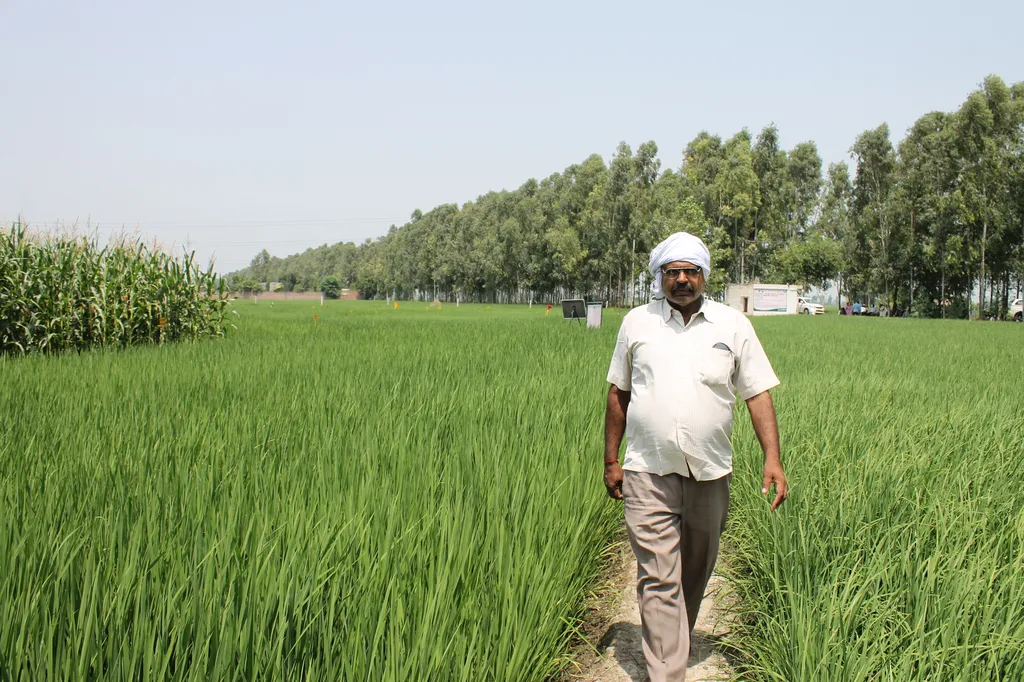In the heart of the Indo-Gangetic Plains (IGP), a region critical to global food security, farmers face a dilemma: how to maintain productivity while preserving precious soil and water resources. A recent study published in *Frontiers in Plant Science* offers promising insights, demonstrating that precision nitrogen and water management, combined with double zero-till (ZT) practices, can enhance wheat productivity, improve resource-use efficiency, and reduce environmental impact.
The two-year study, led by Vijay Pratap from the Division of Agronomy at ICAR-Indian Agricultural Research Institute in New Delhi, compared conventional zero-tillage (ZT) with double ZT wheat. The researchers also tested different irrigation regimes and nitrogen (N) management strategies, including the use of NutrientExpert® (NE®) and SPAD sensors for real-time N monitoring.
Double ZT wheat outperformed conventional ZT, showing significant improvements in growth metrics such as dry matter accumulation, leaf area index, and photosynthetic rate. “Double ZT wheat intercepted 3.5% more photosynthetically active radiation (PAR) and increased grain and straw yields by 6.7–9.9%,” Pratap noted. This boost in productivity is a game-changer for farmers, offering a tangible path to higher yields without compromising sustainability.
The study also revealed that irrigating at 25% depletion of available soil moisture (DASM) enhanced photosynthetic activity and intercepted 18.3% more PAR, resulting in a 9.23% higher grain yield compared to irrigating at 50% DASM. However, delaying irrigation to 50% DASM conserved water without significant yield loss, providing farmers with a flexible strategy to balance water use and productivity.
On the nitrogen front, the NE® + SPAD-based N management strategy saved 40 kg N per hectare while enhancing productivity and efficiency. This precision approach not only boosts yields but also reduces the environmental footprint, a critical consideration in an era of climate change and resource scarcity.
Perhaps most notably, the combination of ZT with 75% DASM, silicon application, and NE® + Leaf Color Chart (LCC) significantly reduced N2O emissions. “This integrated approach is a win-win for farmers and the environment,” Pratap said. “It enhances productivity, conserves resources, and mitigates greenhouse gas emissions, addressing key sustainable development goals in agriculture.”
The implications for the agriculture sector are profound. As farmers grapple with the dual challenges of feeding a growing population and preserving natural resources, precision agriculture technologies like NE® and SPAD sensors offer a beacon of hope. These tools empower farmers to make data-driven decisions, optimizing resource use and maximizing yields.
The study’s findings also underscore the importance of adopting sustainable practices like double ZT and precision irrigation. These strategies not only improve farm productivity but also contribute to long-term environmental sustainability, a critical factor in securing the future of agriculture in the IGP and beyond.
As the agriculture sector continues to evolve, the integration of precision technologies and sustainable practices will likely shape the future of farming. This research provides a roadmap for achieving higher productivity, resource conservation, and environmental stewardship, setting a new standard for wheat farming in the IGP and other wheat-growing regions worldwide.

